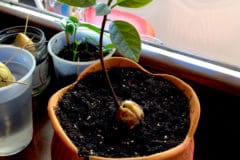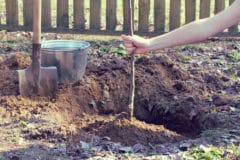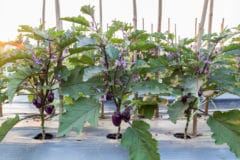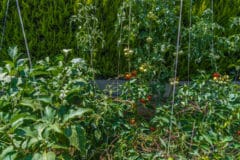Collecting Acorns
Collect acorns as soon as they drop. Look for ones without blemishes or soft spots. They should be brown, reddish-brown or brownish-black with just a touch of green. If their smooth nuts separate from their scaly cupules without tearing, they’re mature enough to plant.
Transporting and Testing
Immediately place the acorns in a sealable, 4-ml plastic bag. Shade them during the trip home, where they’ll go into in a pail of water for three minutes. Discard any that float or feel mushy and dry the rest.
Mimicking Mother Nature
Thekind of acorns you have dictates what happens next. Red or black oak acorns normally sprout in spring, so they require one to three months of refrigeration, bagged in an equal volume of damp sand and kept at 40°F (4.4°C). White oak acorns germinate in fall; plant them right away or refrigerate them in damp sand.
Expert gardener’s tip: Keep refrigerated acorns barely damp and plant them as soon as several have sprouted.
The Planting Process
To plant your acorns:
- Use sanitized gardening pots at least 8 inches deep, filled to 1 inch below their rims with well moistened potting soil.
- Set each acorn 1 or more inch below the surface, with larger ones deeper.
- Cover them with potting soil and water well.
- Water whenever the top 1 to 2 inches of soil feels dry.
- Keep the seedlings in a sunny indoor location until the danger of spring frost passes.
Moving Outdoors
With lifespans averaging between 100 and 300 years depending on species, the oak trees you grow are likely to outlive you. So it’s critical to plant them where that won’t cause a problem. The best sites have:
- Enough room that the fully grown oaks don’t threaten structures or shade out other plants.
- Adequate distance from sidewalks, utility lines, septic systems and underground pipes.
- Minimal vegetation. Growing oak don’t like competing for water, soil nutrients and sunlight.
Move the seedlings to their permanent homes when they’re 4 to 6 inches tall, with healthy root systems, strong tap roots and several leaves. During their first two summers, give them 10 gallons of water every one to two weeks with a soaker hose or drip system.












